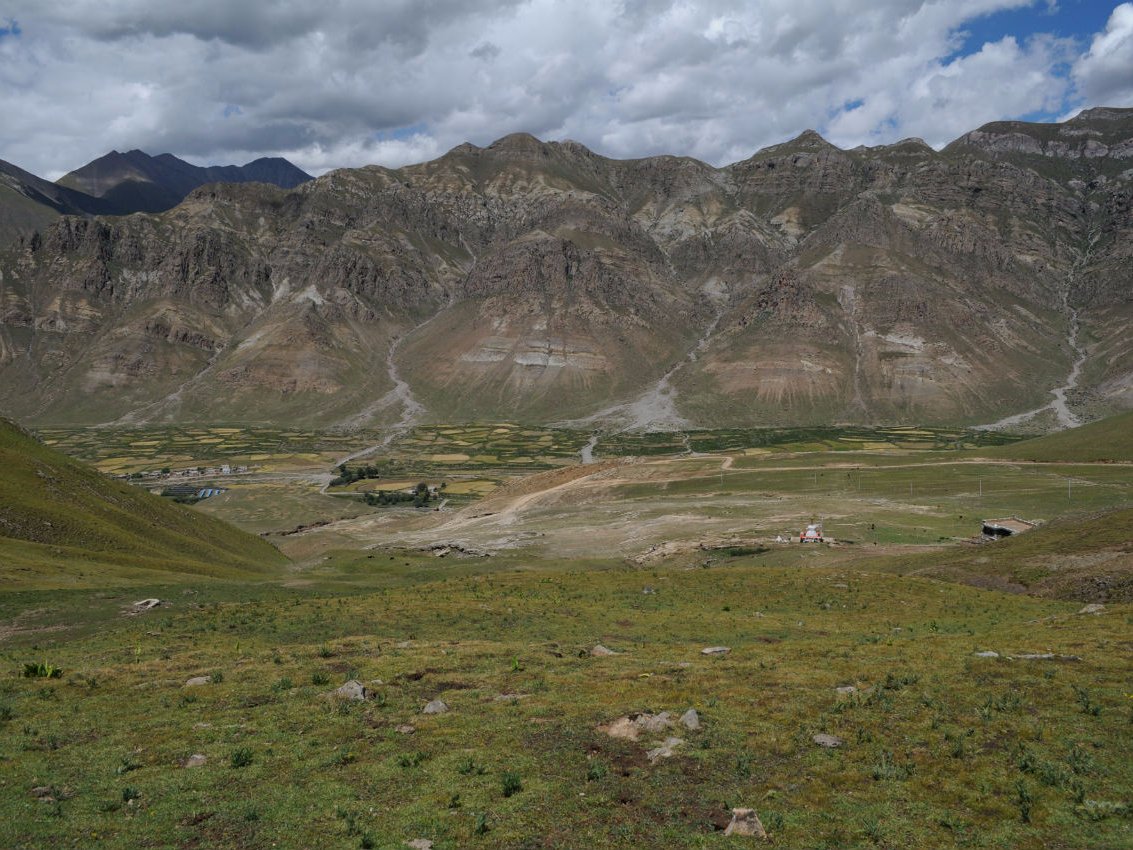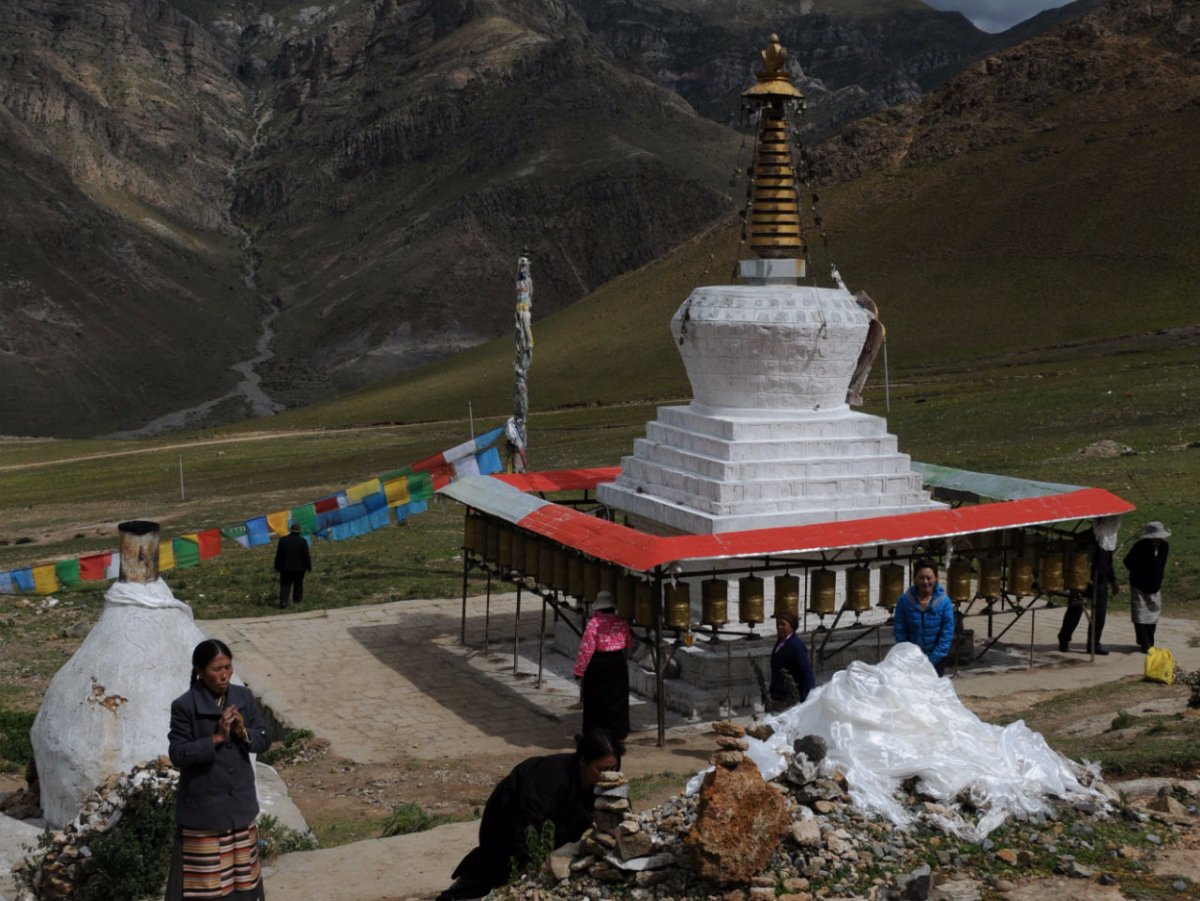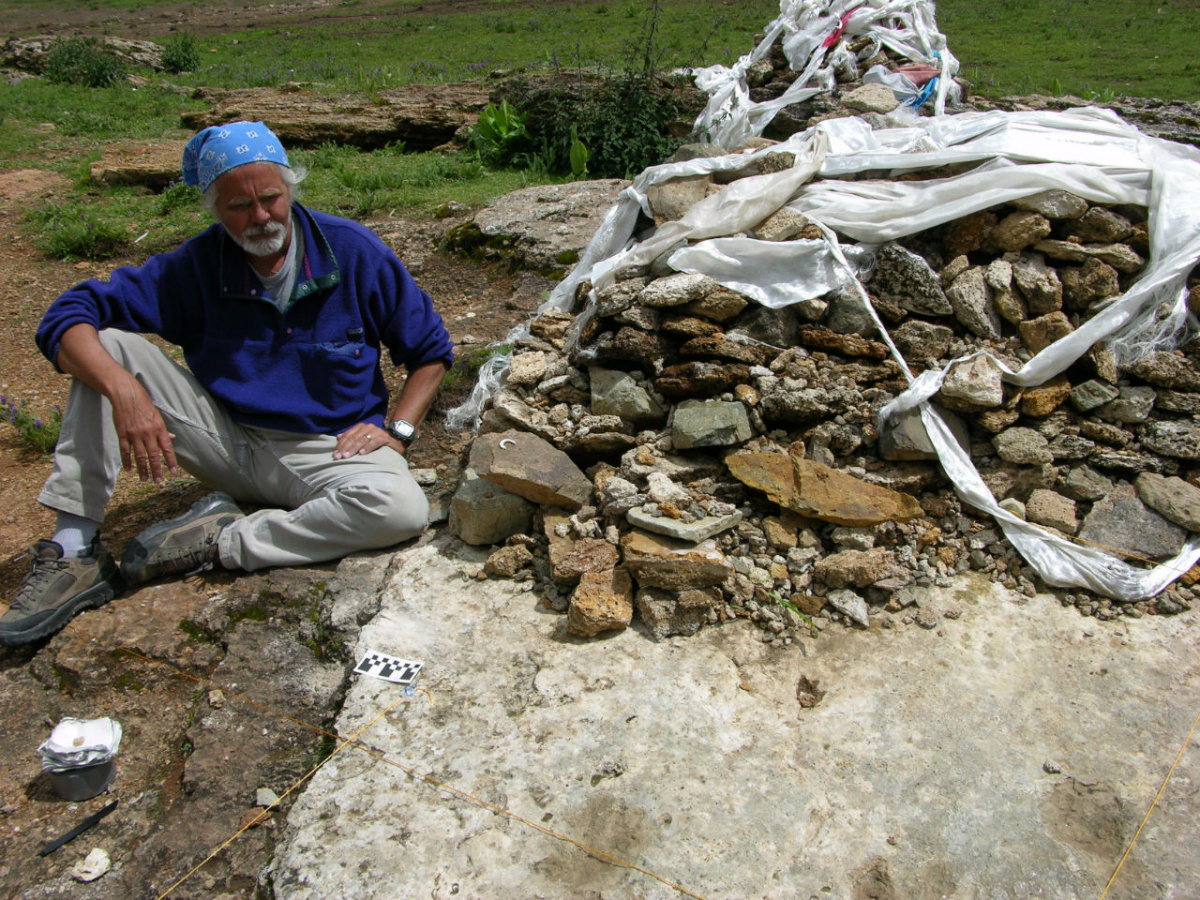Thanks Fred Nerks!
|
INNSBRUCK, AUSTRIA—Live Science reports that a team of researchers led by geologist Michael Meyer of the University of Innsbruck obtained new dates for hand and footprints left in the mud of a hot spring at the high-altitude Chusang site in Tibet. The 19 prints were discovered in 1998, and initial studies suggested they were left some 20,000 years ago. Meyer and his colleagues used uranium-thorium dating to date the sediments, optically stimulated luminescence to date quartz crystals in the layer containing the prints, and radiocarbon dating of microscopic plant remains. The new tests suggest that the prints were made between 7,400 and 12,600 years ago—...




12,600-Year-Old Handprints Show Humans Lived in The Himalayas Much Earlier Than Thought
Our ancestors were intrepid.
LINDSAY DODGSON, BUSINESS INSIDER
12 JAN 2017
www.sciencelart.com
Travertine deposits from along the South Tibetan Fault Systems...
Abstract
...newly investigated travertine deposit in southern Tibet provides a window into Holocene hydrological, geomorphic and climatic processes near the boundary of the Tibetan Plateau and High Himalaya. Travertine, deposited as a result of the degassing of CO 2 -rich groundwater as it emerges on the Earth's surface, is in many cases formed along the trace of major crustal-scale faults in primarily extensional tectonic regimes. A travertine platform measuring roughly 1 km by 0.5 km exists near the town of Nyalam in southern Tibet along a major Himalayan down-to-the-N normal fault, the South Tibetan Fault System. A wide variety of travertine depositional textures and features are recorded in the platform on a series of terraces. Active travertine deposition was observed from spring mounds and seeps along the base of the platform at the modern river level. Palaeotemperatures of spring water, calculated from δ 18 O of the travertine, range from 9 to 25 • C, which closely matches the temperatures recorded from modern springs in the area. A complex geomorphological landscape records interaction between growing alluvial fans, travertine accumulation, and a rapidly down-cutting river with associated fluvial terraces. River incision was contemporaneous with travertine deposition, as indicated by cemented fluvial river gravel layers interbedded with travertine. High 87 Sr/ 86 Sr ratios in the travertine (mean of 0.7168) indicate subsurface fluid interaction with radiogenic crystalline rocks of the underlying Greater Himalaya. Uranium-series ages of the travertine platform range from 5400 a (± 950 a) to 11 600 a (± 1000 a), and indicate a younging progression from higher terraces near the valley wall to lower terraces at present-day river level. Travertine that overlies a river gravel terrace 18 m above river level formed at 11 600 a. This date yields a local incision rate of 1.6 mm a −1 , consistent with estimated fluvial incision rates in the High Himalaya. The range of our U-series ages coincides with an interval of higher precipitation associated with greater intensity of the Indian monsoon, which led to elevated spring discharge and carbonate precipitation in this part of the High Himalayas.
...Active travertine deposition was observed from spring mounds and seeps along the base of the platform at the modern river level. Palaeotemperatures of spring water, calculated from δ 18 O of the travertine, range from 9 to 25 • C, which closely matches the temperatures recorded from modern springs in the area...